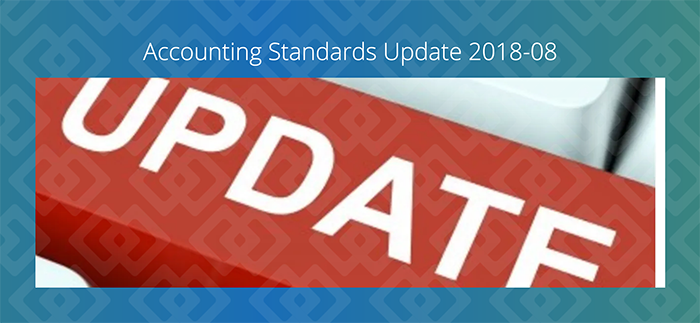In June 2018, the Financial Accounting Standards Board (FASB) issued Accounting Standards Update 2018-08 “Clarifying the scope and accounting guidance for contributions received and contributions made.” This update was issued to provide additional guidance regarding contributions and while accounting for such contributions is primarily applicable to not-for-profit (NFP) entities, it is important to note that the amendments in this update apply to all entities.
The amendments in this update clarify current guidance about whether a transfer of assets is a contribution, or an exchange transaction. These amendments discuss how an entity determines whether there is commensurate value in return for resources transferred. The main provision provides that if a transaction is to be accounted for as a contribution, the entity must determine whether it is unconditional, with revenue being recognized upon received, or conditional with revenue recognized when the condition has been satisfied. Additionally, the update provides guidance when a barrier and either a right of return of the assets transferred, or right of release of the promisor from its obligation to transfer assets exist, the contribution would be conditional and, therefore, not recognized into revenue until the condition has been satisfied. Further, the update providence guidance regarding a resource provider.
The effective dates and transition are as follows:
For transactions in which an entity is either a public business entity, or an NFP that has issued, or is a conduit bond obligor for, securities that are traded, listed or quoted on an exchange or an over-the-counter market and serves as a resource recipient, the entity should apply the amendments in this update on contributions received to annual periods beginning after Jun 15th, 2018. All other entities should apply the amendments for transactions in which the entity is a resource recipient to annual periods beginning after December 15th, 2018. With respect to entities that are resource providers the respective dates are annual periods beginning after December 15th, 2018 and December 15th, 2019.
The Amendments should be applied on a modified prospective basis. Under a modified prospective basis, in the first set of financial statements following the effective date the Amendments should be applied to agreements that are either:
- Not completed as of the effective date
- Entered into after the effective date
A completed agreement is an agreement for which all the revenue (of a recipient) on expense (of a resource provider) has been recognized before the effective date in accordance with current guidance.
The Amendments in this update should be applied only to the portion of revenue or expense that has not yet been recognized before the effective date. No prior period results should be restated, and there should be no cumulative effect adjustment to opening balance net assets (Retrained earnings of a for profit entity) At the beginning of the year of adoption. Under this approach an entity is required to disclose both:
- The nature of and reason for the accounting change
- An explanation of the reasons for significant changes in each financial statement line item
Retrospective application as well as early adoption is permitted.


